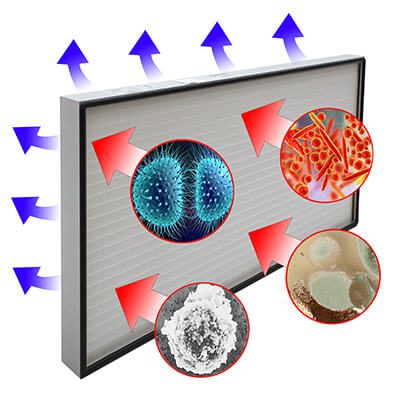Introduction:
The transmission of bacteria and viruses through respiratory droplets is a common occurrence, particularly when individuals with airborne infections sneeze, cough, laugh, or exhale. The ever-changing nature of viruses, exemplified by the emergence of new variants like Omicron in the case of Covid-19, necessitates proactive measures to prevent infections. This article focuses on the significance of indoor air quality helps prevent airborne viruses and the spread of COVID-19, examining the role of various technologies and practices in achieving this goal.
The Importance of Indoor Air Quality:
Maintaining good indoor air quality is crucial for overall health, considering the substantial amount of time people spend indoors. Poor indoor air quality, laden with pollutants such as gases, chemicals, and airborne viruses, can lead to health issues ranging from headaches and eye irritation to allergies and, in some cases, Covid-19. Studies indicate that more than 81% of individuals are at risk of respiratory and skin problems due to inadequate indoor air quality, highlighting the need for interventions to address this concern.
Technological Solutions to Improve Indoor Air Quality:
Various technologies, including HEPA filters, UV bulbs, and air purifiers, have proven effective in reducing the risk of Covid-19 transmission through airborne particles. While these technologies alone cannot guarantee protection against Covid-19, when combined with recommended practices such as social distancing and mask usage, they become valuable tools in minimizing the likelihood of indoor transmission.
Air Purifiers and HVAC Filters:
Properly selected air purifiers and HVAC filters play a crucial role in reducing airborne contaminants like viruses. To ensure effectiveness, it is essential to choose an air purifier capable of removing small particles, typically measured in micrometers (μm). The Clean Air Delivery Rate (CADR) rating system is commonly used by manufacturers to assess the performance of air filters. Additionally, HVAC filters, if chosen correctly based on size and efficiency, contribute significantly to maintaining clean indoor air.
Guidelines for Using Filters and Air Purifiers:
When selecting air purifiers, it is important to consider factors such as the unit’s size in relation to the intended space and its CADR for smoke. For HVAC filters, adherence to size specifications and the use of HEPA filters within the system are crucial. Portable air purifiers are suitable for single rooms, while central HVAC filters cater to entire houses. These devices, when integrated into a comprehensive plan following CDC guidelines and best practices, enhance protection against airborne viruses.
Conclusion:
The global response to the Covid-19 pandemic has necessitated significant policy changes, emphasizing reduced human contact and enhanced bio-decontamination measures. While advanced technologies like UV air purifiers and ionization are effective in large facilities, their applicability in rural areas, homes, and low-budget institutions is limited. Therefore, investing in good indoor air quality through the expertise of HVAC specialists becomes paramount.
Disclosure: We may get commissions for purchases made through links in this post.








